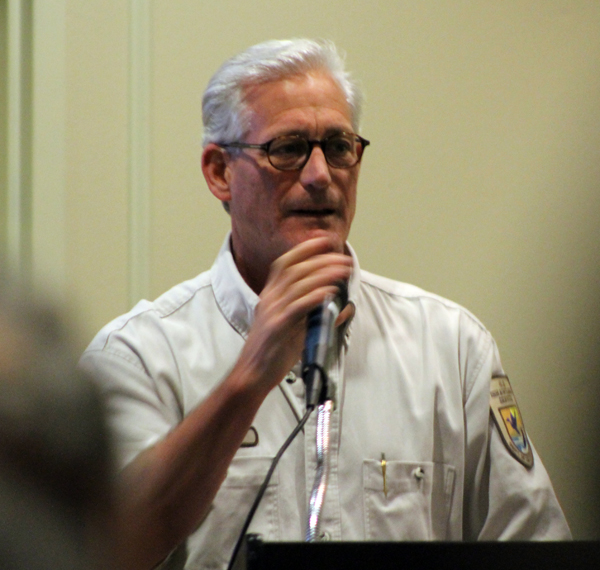I’m skipping my usual Friday meandering to talk about a meeting Terry and I attended at the Plantation Inn on Wednesday evening regarding Three Sisters Springs.
I hate to be boring.
Sorry if this falls into that category.
But, I really am trying to understand the whole manatee, eco-tourism and “save our springs” issues. So I’ve been attending any meeting I see mentioned in the local paper. This one was particularly interesting because I had met the speakers previously. Not that they remember me, but back when we attended the Friends of the Crystal River Refuge meeting in January, we had a brief conversation. I had asked a question and the woman from USFWS that was speaking answered it incorrectly. During the break a man and woman approached me to give me the correct response. I’m guessing they thought I was a reporter since I had my camera, a tablet, and was taking copious notes and they wanted to get the record straight.
No, not a reporter, just a blogger. Looking at the world with my own little skewed view and posting about it.
So when I saw the meeting advertised I thought it just might be those two interested and very interesting people.
And I was right!
These two were scientists conducting a study from the boardwalk at the Crystal River Spring and this meeting was a presentation of their preliminary findings.
First Andrew Gude, refuge manager with the US Fish and Wildlife Services, opened the session by informing us that this study was made by volunteers and the conclusions were made by the authors, not the USFWS.
I’m okay with that. I’m all about disclaimers.

I met Andrew Gude at an open house at Three Sisters Springs just over a year ago. (I’m pretty sure he doesn’t remember me either) It was our first visit to the Spring. I had no idea who he was but he spoke with so much passion about the refuge that I was impressed. And wanted to know more. That’s when we joined the Friends of the Crystal River Refuge. And we’ve been following him ever since.
The volunteers, Rae Ellen Syverson and Carl Wolfe, gave us a brief history of their vast education and experience and then spoke of their observations. They, along with several other volunteers and interns with USFWS, stood on the boardwalk at Three Sisters Springs between December 10 and January 31 from sunrise to sunset and counted manatees, swimmers, and paddlecraft as they entered and exited the Springs. They also recorded the weather, the temperature of the gulf, air, and springs, and the tides.

While the study will not be complete for another month, what they observed from the boardwalk confirmed that more manatees used the Springs than had been realized or estimated; manatees were affected by the tides; boardwalk visitors love the Springs but disapproved of swimmers and boaters in the Springs; groups of swimmers with a tour group behave better than non-accompanied; and holidays are chaotic because of high numbers of swimmer and boaters.
Then the speakers continued that from their personal observation the high number of swimmers and boaters degrade the manatee experience; the Springs run is a major management problem; and current practices will not support the long-term eco-tourism business.
Several tour operators were in attendance. They had numerous questions and comments. It was not a hostile exchange–rather very constructive. I had the feeling that USFWS and the tour operators work very hard to stay amicable. It’s a win-win situation.
Well, this post is way too long and you have probably stopped reading by now. But it was a very informative and educational meeting. I look forward to attending more in the future.
And, by the way, if you want to get the perspective from the USFWS, they released their own findings on Thursday that you can read on their website.
Have a great weekend!
Kathy
